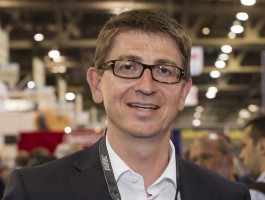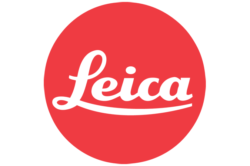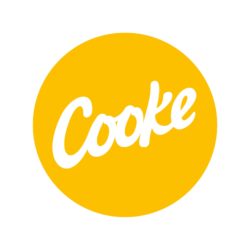 Martin Prillmann is Managing Director of ARRI. We talked at NAB about cameras, concepts, cinematography and ALEXA.
Martin Prillmann is Managing Director of ARRI. We talked at NAB about cameras, concepts, cinematography and ALEXA.
Jon Fauer: Why you think the ALEXA is so successful? Why did it hit such a nerve?
Martin Prillmann: A couple of things came together. When we introduced the ALEXA in 2009, there were several different approaches to digital cinematography. We, at ARRI, have been involved in cinematography tools for the last 90 years. We attempted to translate that long experience with the process of filmmaking into a product.
What that means is the camera, first of all, focuses on image quality. That’s what ARRI really stands for. The second issue is definitely the reliability and ruggedness of the camera. Cinematographers have to be sure, when they pick up the camera, push the record button, that it is working. They cannot worry that the camera is not working. There is one issue which is new in digital cinematography, and that’s the workflow. With film, you had a process that was defined for the past 100 years.
Everywhere in the world you had a lab, you were shooting film, and then you brought it to the lab. It was a worldwide standard. That was totally new in digital cinematography. We had some answers with a workflow that works, that is simple, efficient, and delivers the quality that you’re expecting. And last but not least, a major reason for the success of the ALEXA is that we have an architecture where the platform is not something you need to reinvest in a couple of months later.
We deliver upgrades, we have a clear path of where the camera can go to and where we can bring it to. And these four reasons definitely have hit a nerve. The industry came to a point where the transition is possible.
Q: What transition?
A: The transition from film to digital. That has been building up for a while. ALEXA, the way I see it, really helped that transition because it provided a simple, workable path.
Q: We talked about upgrade path. Where do you see it going?
A: We communicated some of our upgrade paths already. The camera, as a system, has different technologies built in. There is the workflow, there is the electronics. There is firmware and how it handles the camera. There are quite a lot of variables where we can provide improvements.
The second aspect is that one size fits all doesn’t work. We have, with ALEXA, a camera that covers a large area of the needs in cinematography. We now have ALEXA, ALEXA PLUS, ALEXA M, and the upcoming ALEXA Studio. These models tackle different issues–not all of them mainstream. Other upgrades definitely will consider improvements in electronics and improvements in our software architecture, which we’re continuously evolving. One thing is frame rates to 120 frames per second, which we will have later this year. There will be things coming after that, which I won’t talk about now.
Q: There’s a lot of talk about 4K in the future. Is this camera going to be upgradable to 4K then?
A: No, the camera is not designed to be a 4K camera. Our goal, and I think we are pretty well on track on that, is to get most out of 2K, and not to have 4K simply to have 4K. We don’t believe in the pixel race. We believe that a digital camera is a system which is the sum of more elements than only the pixels.
Q: A leading question: I remember a few years ago when the ALEXA project started, I understood that ALEXA would be used for productions up to 2K, for TV, HD, and leaving the high end studio productions to film. Is that still your roadmap? Or has that changed?
A: We were a bit surprised at how well accepted ALEXA and our ARRIRAW workflow was on high-end feature productions that previously shot film. Our strategic partnership with CODEX is in place, and it really can deliver. ARRIRAW has been received in the market and it’s definitely being considered to have the highest quality of pictures delivered, without just considering pixels. So, for us, it’s really not a question of 4K or 2K, but it’s the sum of all elements, and taking ARRIRAW as an example, we believe that we have something for high-end digital cinematography.
Q: It seems, at this show, as if somebody turned a switch, and digital is now accepted for very high-end production.
A: Some of it. I think film is still a very good medium to shoot high end, but with our ARRIRAW and ALEXA, we definitely are in the race.
Q: Are you marketing ALEXA differently?
A: It’s all based on the four elements that we talked about at the beginning, which are ruggedness, picture quality, future-proof architecture, and workflow. These are our main parameters in marketing as well.
Q: Worldwide, how is it shaping up in different countries?
A: We have different markets and different market needs. The US is a leading market, and the lead market in terms of opinion making. European markets, like France or the UK, definitely have players who are opinion leaders in the world. Asia is one of the key markets of the future. We see that the filmmaking industry is evolving all around the world. Maybe on different paths, but all of them are increasing in quality.
Maybe not on all applications, but there definitely is a leading edge in most countries. We need to address these questions. We don’t have specific local adaptations of our products, but we definitely have, within our ALEXA platform, the possibility to provide different answers to the needs of these areas.
Q: In India, they’re switching to digital faster than they thought. What do you think about anamorphic in certain markets? Will it be anamorphic or are we just going to see productions shot in Super 35 spherical?
A: That’s not really up to us to answer. I think it’s really up to the creative people using our technical tools. We can only give our customers tools with which they can translate their ideas.
Q: But do you see any market trends? Are customers saying, “We really want the 4:3 Sensor?”
A: Well, we will see that. We will have a product with a 4:3 chip coming later this year with the Studio, and then we will see how it’s going to be accepted. We believe that there is a market. We are not sure how large it is going to be. But we definitely think that there is an opportunity for us.
Q: Personally, I think it’s going to be bigger than we expect, because anamorphic 2:1 on a 4:3 sensor gives you a different look, a magical, indescribable thing that the high end really aspires to very often. That’s my own opinion. Also, after every 3D wave, there’s always been a wide screen wave.
A: There are some things in this industry that are really appreciated if you try to go to the highest end. Because the customer, especially the cinematographers and directors, try out new things. They’re very innovative. But on the other hand, they try to bring to life the best quality that they can achieve. And anamorphic is an option there, and we are definitely going to follow that. We have been asked by high end cinematographers about it, and so, we’ll see what it’s going to do.
Q: What about the “big picture?”
A: One thing we could talk about is our approach with the ALEXA camera as an open infrastructure. We’re not trying to force a closed, end to end system on our customers. The ALEXA can be used with lots of added equipment. It’s an open system. That’s definitely one of the main things our customers appreciate. It provides versatility and can be used in various ways.
Q: I think an example of that is the PL Mount, which is ARRI introduced. And now, years later, this NAB show seems to say, “It’s a PL world.”
A: It is. PL equals 35 millimeter. And there definitely is a transition from two-thirds inch to 35 millimeter. Will it go larger? Well, not for the moment. I guess it’s a standard that’s here to stay for the next couple of years or decades even.
Q: Do we see any interest in 16mm?
A: 16 millimeter will be an option. We, as a company, we’ll definitely not forget about film and we will keep on providing equipment if needed. It’s up to the choices of directors and cinematographers as to what formats they’ll use, and we’ve seen some great pictures in 16 millimeter. For us as a company, we don’t think that we’ll make big sales with it anymore. We will keep it up, we will service it. Obviously, our development resources are focused on digital. There definitely has been a shift.
Q: How much longer do you think you’ll continue supporting 35 millimeter film camera production?
A: Well, as I said, we might not be building the equipment, but we will be supporting it. We definitely will service it, and I don’t see an end to that at the moment.
Q: How long do you think we will continue to shoot film before we totally switch to digital? It happened in the still world much faster than we thought.
A: In ten years’ time, there still might be film production using film, if they continue to get access to 35mm film stock. But the transition is, at the moment, taking place. It’s taking place quickly. We’ve seen it in commercials—they are really all digital. We see it in TV, quite a transition. It’s just a question of a little bit more time, that’s the near future. And in 35 millimeter, the way it goes with the ALEXA and ARRIRAW, it’s definitely faster than we anticipated and expected, but it’s happening right now.
Q: The ALEXA project first started, I think, when you and I met in Amsterdam.
A: 2009.
Q: 2009. And I don’t think anyone had any idea that it would be this successful. It seemed almost as if ARRI was, I wouldn’t say betting the company on it, but ARRI was really going out on a limb. It was a really daring, bold move for an analog camera company. That must have been pretty scary, right?
A: Well, in 2009, what we presented at the IBC was perhaps perceived as an idea, but it was the result of ARRI working in the field of digital technology since the late nineties, actually. Starting with our scanner. So we had a long history with color management, sensors, and sensor architecture, which maybe hasn’t been discussed much outside of ARRI. And that definitely took a lot of people by surprise. The result of it is the ALEXA, which is a superb camera based on technologies that we have worked on for the past 15 years.
Q: The daring thing from a manufacturer of analog cameras was more a question of when to “push the button?” When to introduce ALEXA…
A: That’s it, yes. We were really lucky in definitely hitting a sweet spot in terms of timing. And we delivered on time when we said we were going to deliver. That’s part of our success story as well. It’s the reliability a customer knowing that when they invest, they will receive the camera when promised. If they purchase a camera and are promised one for June, they will get it in June. Also, we communicated early on the roadmap of which products we were going to introduce. Of course, we changed things slightly, but the core and essence of the products that we’re bringing out now were promised in the beginning.
Q: How many ALEXAs are you building a month?
A: Well, it’s something we really don’t want to brag about. It’s definitely more than some of us might think.
Q: I would assume from the time I visited last September to now, you must have really ramped up production and there’s probably a lot more production area.
A: It is.
Q: Because of demand?
A: We quadrupled our production capacity from what we initially planned. But that’s the limit. We want to keep certain functions in-house and not give it to third parties. For instance, our quality control is a very rigid process, and there’s no compromise there. If a camera falls through on a little aspect, it will not be shipped. Every camera has to go through our very strict quality process. And that’s a bottleneck for us, but we’re not willing to give it up.
For a tour of ARRI and ALEXA construction, as well as an interview with ARRI Managing Director Franz Kraus, download our October 2010 ALEXA REPORT at www.fdtimes.com/articles








IF Film goes away, that will be one very sad day.
Unbelievable how people are willing to trade something beautiful, organic, future-proof, safe, proven as film for the false immediacy and obsolescence of digital.
1) I also love film. I love the way it looks and most of all I love the fact that you have to physically destroy a negative or print to completely eliminate it. I have seen untold terabytes of movie data vanish, never to be seen again. But the negatives that were generated from that digital data are still with us…
2) Arri is being polite here, but aside from the Alexa being a superb camera, one of the biggest reasons it is such a success is that Arri is a professional and mature company. When you deal with Arri, you are dealing with adults.